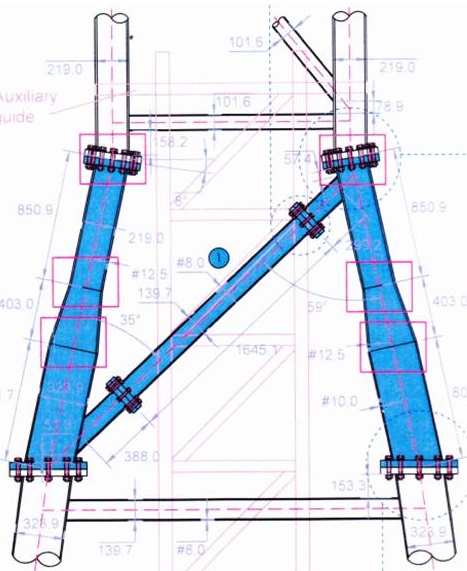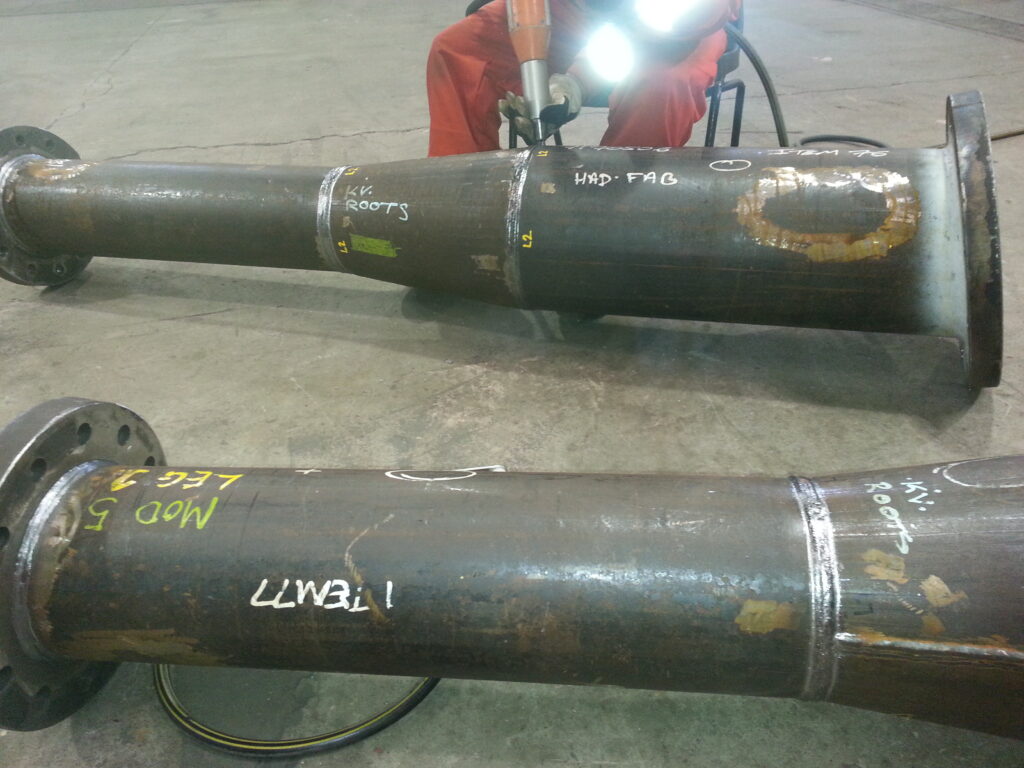Meteo Masts Life Extension
Meteo Masts

Life Extension of Meteorological Towers through Ultrasonic Peening
A measurement tower or measurement mast, also known as a meteorological tower or meteorological mast (met tower or met mast), is a free-standing structure used to measure key weather conditions such as wind speed, wind direction, temperature, and other atmospheric parameters. These towers are essential for wind resource assessment, providing reliable long-term data that forms the foundation for planning and optimizing wind energy projects.
Given their role, met masts are typically installed for long operational periods, often exceeding the original design life. Extending their service life is of great value since it reduces the need for costly dismantling, replacement, and reinstallation, while also ensuring uninterrupted measurement campaigns.
Role of Ultrasonic Peening in Life Extension
Like wind turbine towers, meteo masts are exposed to cyclic loading from wind, leading to fatigue in critical welded joints, connections, and attachments such as brackets, ladders, and sensor supports. Over time, this can compromise structural integrity.
Ultrasonic peening treatment (UPT) offers an effective solution by:
- Introducing beneficial compressive residual stresses in weld toes, which significantly increase fatigue resistance.
- Serving both as a preventive measure during construction and assembly (in the workshop), or as an on-site remedial treatment applied to in-service structures showing signs of fatigue damage.
- Extending the original fatigue design life, allowing met masts to remain in safe operation for much longer periods than initially anticipated.

Economic and Practical Benefits
- Service life extension: Rehabilitating an existing met mast through ultrasonic peening is far less costly than replacing the structure with a new one.
- Reduced downtime: On-site application allows life extension with minimal interruption to measurement campaigns, preserving valuable continuous data records.
- Material and resource savings: Extending the use of existing structures reduces the need for new steel fabrication and transport, lowering both costs and environmental footprint.
- Operational efficiency: By reducing the likelihood of weld failure, ultrasonic peening minimizes unplanned maintenance and safety risks.
Proven Benefits in Similar Structures
Life extension engineering, including ultrasonic peening, has already been successfully applied in other steel structures subject to fatigue, such as:
- Offshore oil and gas platforms
- Bridges and long-span steel structures
- Wind turbine towers and foundations
These successful applications demonstrate that meteo masts, which share similar fatigue-prone welded details, can equally benefit. By applying ultrasonic peening strategically—either at construction or later during operation—operators can ensure the safe, reliable, and cost-effective long-term use of measurement towers.
Conclusion
Meteorological masts are critical for renewable energy development, and their long-term reliability is a key factor in reducing project costs. Ultrasonic peening provides a proven, practical, and sustainable method to extend the service life of these structures, safeguard investments, and minimize environmental impact.
